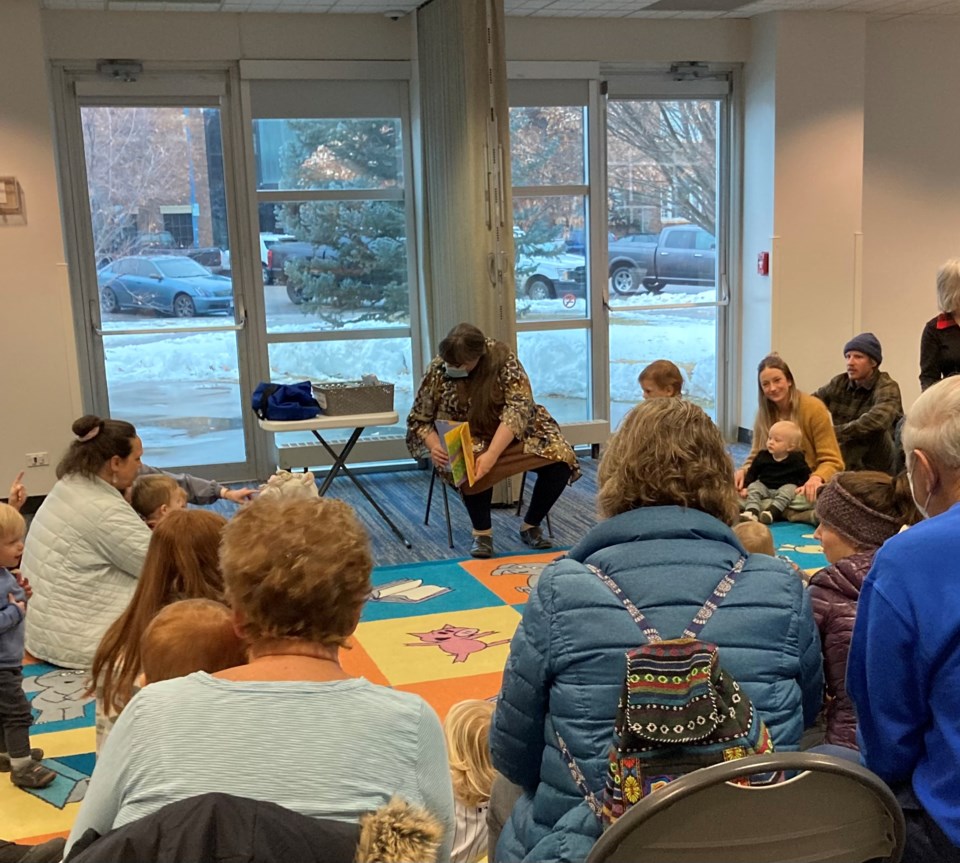The Longmont Public Library has long been an essential learning center for the community of Longmont. Its youth services include tutoring and homework help to assistance with research.
Possibly the most popular of the library’s youth program offerings is the children’s storytimes, which are a foundational part of youth services and the credit of a growing community. The program also contains a lesser-known but abundantly important history.
In existence since the inception of the library at the turn of the 20th century, the program’s general goals have related to fostering early childhood developmental growth and exploration. Claire Studholme, the Children’s and Teens’ Library Manager said the storytimes are intended to be “a space for community connection and socialization” with the aim to “foster language skills, instill a love of reading for the caregiver and child participants, as well as help children prepare for learning to read and going to school.”
Storytimes have been the foundation of public libraries across the United States for the past 100 years. And they have been largely shaped by the storytellers throughout that history.
Studholme recounted the story of Pura Belpré, an educator and puppeteer at the New York Public Library during the 1930s and ‘40s. Studholme said Belpré’s work “transformed youth services” in making them more inclusive of diverse voices. A picture book about Belpré titled “Planting Stories,” by Anika A. Denise and illustrated by Paola Escobar, is read at storytimes. It tells the story of Belpré’s transformation of the New York public library to include Puerto Rican stories and Spanish speaking storytimes.
“She was a pioneer in her field,” Studholme said.
The history of storytimes is still happening today. During the past 20 years, at the Longmont library and other libraries across the U.S., storytime programs have expanded to include bilingual, multilingual and movement storytime options, as well as infant and other age-specific storytimes.
Age-specific, bilingual and multilingual storytimes were introduced to the Longmont library around 10 years ago. Valerie Taylor-Pierce used to read at the bilingual storytimes, now she brings her granddaughter to listen. She said the events — when she led them, — “had many English speakers trying to learn Spanish and expose their children to Spanish speaking. And it had many native Spanish speakers who could share what they know. It was a good way to promote the library, and let the community know what resources the library has for bilingual communities.”
The story times have also evolved to better recognize diversity. Studholme listed a number of themed storytimes that the library has organized, including an LGBTQ+ Rainbow Storytime for Pride Month, Indigenous Authors Storytime, Black History Month Storytime, AAPI Author Storytime, and Hispanic Heritage Month Storytime.
“We endeavor to make every storytime include diverse voices and are deliberate in the books, songs, and dances we choose so everyone feels welcome at storytime,” Studholme said.
These developments have only contributed to the increasing popularity of the storytime events. On average there are 25 to 50 participants per session. A recent infant storytime hosted 64 total caregivers and infants.
One such participant, Michael Strindin, said there’s a regular core group at the storytimes, with new people who often show up. He added that the storytimes are “a wonderful resource, (that) don’t compare to other storytimes around Colorado. And it doesn’t hurt that it ends with bubbles.”
“I really like doing the story times because I like watching the kids learn that other children are alive, and not everything is yours,” said Kathleen Kunau, reader for one of the library’s storytimes.
During the pandemic, the library held hybrid virtual and in-person storytimes. Now, the storytimes are completely in-person, an aspect seemingly crucial to the interactive purposes of the program.
Studholme noted an ongoing challenge of the program is not having a space in the library dedicated to storytimes. She says they make do with meeting rooms and “do their best to transform the space into a safe and fun place for kids.”
Despite these challenges, the story times continue to be a success. With their high participation rates and dedicated librarians that enjoy the insights of their job, The program is a sentiment to Pura Delpré’s ambition to make youth services both inspiring and inclusive to all.



